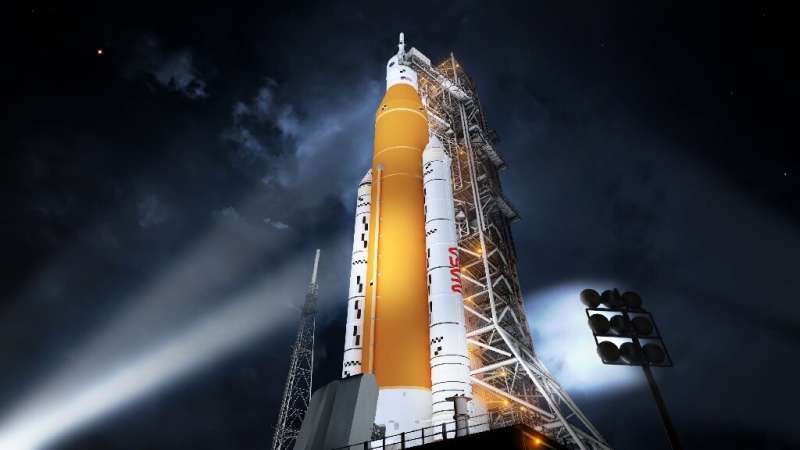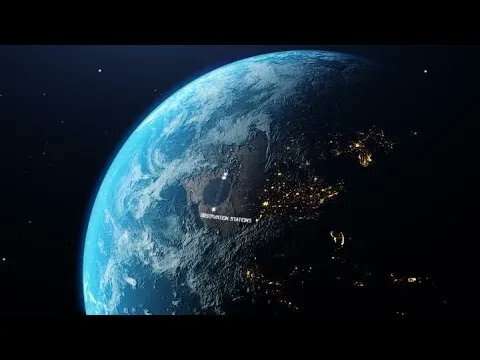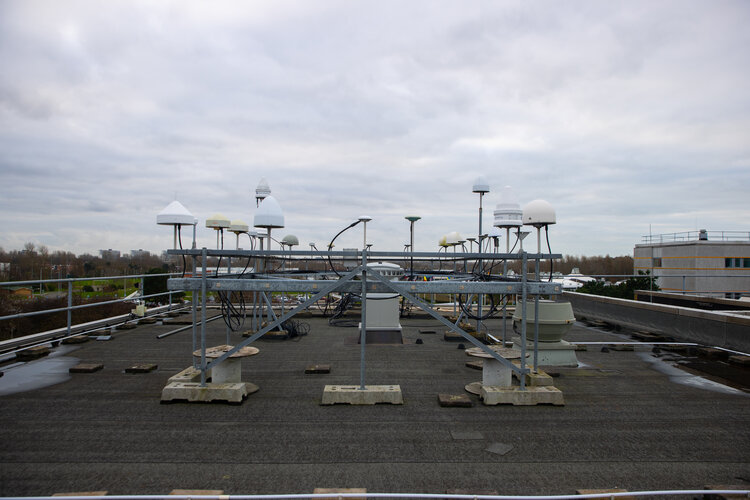
Copernical Team
Uncrewed Artemis I mission to Moon pushed back

The first mission in NASA's program to take humans back to the Moon has been delayed until spring at the earliest, the US space agency said Wednesday, saying it needed more time to complete safety checks.
The Artemis I launch, initially scheduled for late 2021 and then postponed twice more, will now happen no earlier than April.
"Teams are taking operations a step at a time to ensure the integrated system is ready to safely launch the Artemis I mission. NASA is reviewing launch opportunities in April and May," NASA said in a statement.
Artemis I will be an uncrewed flight test, but will signal the real start of the program, which could eventually see the first woman and the first person of color to step foot on the Moon.
Astronomers lined up under an asteroid's shadow to measure its size precisely

Astronomers will go to great lengths for science. Recently, dozens of astronomers had the misfortune of traveling to one of the most tempting locales in the southwestern U.S.—Las Vegas. But they weren't there for the city's bright lights—they were there to observe the very dim light of a star thousands of light-years away. And what they specifically wanted to see was the light from that star blink out for a few seconds. That lack of light provided the exact data they needed to help them determine the size of Eurybates, one of the Trojan asteroids that will be the focal point of NASA's Lucy mission.
What the scientists were looking for was an occultation. Most people know the most common form of this phenomenon—an eclipse. But occultations can happen with any background star and can be caused by any foreground object. Calculating where these minor occultations of stars by asteroids will occur takes a significant amount of orbital mechanics and processing power. The Earth itself has to be aligned correctly, and the asteroids and stars have to line up just right and be big enough.
Incoming! Debris enroute to the Moon

The Moon is set to gain one more crater. A leftover SpaceX Falcon 9 upper stage will impact the lunar surface in early March, marking the first time that a human-made debris item unintentionally reaches our natural satellite.
A Chinese space tug just grappled a dead satellite

A Chinese satellite pulled a defunct navigation satellite out of the way of other satellites on January 22. The satellite, called SJ-21, appeared to operate as a space tug when it grappled onto the navigation satellite from the Chinese CompassG2 network. The operation details didn't come from Chinese authorities but from a report by ExoAnalytic Solutions, a commercial space monitoring company.
Chinese authorities are tight-lipped about the operation, but what can observations tell us about Chinese capabilities?
Earth's geosynchronous orbit is crowded, so on the face of it, having one less piece of space debris is a good thing for all satellite operators. But people can get suspicious when China does something like this.
Roof of the satnav world
 Image:
Roof of the satnav world
Image:
Roof of the satnav world Lion will roam above the planet - KP Labs to release their "king of orbit"
 KP Labs is beginning to work on an expansion of its product portfolio with an on-board computer for small satellites that will streamline and speed up on-orbit data processing, as well as ensure greater hardware reliability in modern satellite missions. This is the third Data Processing Unit (DPU) designed by KP Labs, and the first one suited for use in larger missions. After the introduction of
KP Labs is beginning to work on an expansion of its product portfolio with an on-board computer for small satellites that will streamline and speed up on-orbit data processing, as well as ensure greater hardware reliability in modern satellite missions. This is the third Data Processing Unit (DPU) designed by KP Labs, and the first one suited for use in larger missions. After the introduction of China launches L-SAR 01A satellite for land observing
 China launched a Long March-4C rocket to place a new satellite in space Wednesday.
The rocket blasted off at 7:44 a.m. (Beijing Time) at the Jiuquan Satellite Launch Center in northwest China and soon sent the L-SAR 01A satellite into preset orbit.
The satellite, equipped with L-band synthetic aperture radar (SAR), will be used to monitor the geological environment, landslides and ea
China launched a Long March-4C rocket to place a new satellite in space Wednesday.
The rocket blasted off at 7:44 a.m. (Beijing Time) at the Jiuquan Satellite Launch Center in northwest China and soon sent the L-SAR 01A satellite into preset orbit.
The satellite, equipped with L-band synthetic aperture radar (SAR), will be used to monitor the geological environment, landslides and ea How big does your quantum computer need to be?
 Quantum computers are expected to be disruptive and potentially impact many industry sectors. So researchers in the United Kingdom and the Netherlands decided to explore two very different quantum problems: breaking the encryption of Bitcoin (a digital currency) and simulating the molecule responsible for biological nitrogen fixation.
In AVS Quantum Science, from AIP Publishing, the resear
Quantum computers are expected to be disruptive and potentially impact many industry sectors. So researchers in the United Kingdom and the Netherlands decided to explore two very different quantum problems: breaking the encryption of Bitcoin (a digital currency) and simulating the molecule responsible for biological nitrogen fixation.
In AVS Quantum Science, from AIP Publishing, the resear China to improve space infrastructure with new satellites, technologies: white paper
 China will continue to improve its space infrastructure, and integrate remote-sensing, communications, navigation, and positioning satellite technologies in the next five years, according to a white paper released on Friday.
The white paper, titled "China's Space Program: A 2021 Perspective", was issued by the State Council Information Office of China.
According to the paper, China w
China will continue to improve its space infrastructure, and integrate remote-sensing, communications, navigation, and positioning satellite technologies in the next five years, according to a white paper released on Friday.
The white paper, titled "China's Space Program: A 2021 Perspective", was issued by the State Council Information Office of China.
According to the paper, China w Researchers achieve burning plasma regime for first time in lab
 After decades of fusion research, a burning plasma state was achieved on November 2020 and February 2021 at Lawrence Livermore National Laboratory's National Ignition Facility (NIF), the world's most energetic laser.
Obtaining a burning plasma is a critical step toward self-sustaining fusion energy. A burning plasma is one in which the fusion reactions themselves are the primary source of
After decades of fusion research, a burning plasma state was achieved on November 2020 and February 2021 at Lawrence Livermore National Laboratory's National Ignition Facility (NIF), the world's most energetic laser.
Obtaining a burning plasma is a critical step toward self-sustaining fusion energy. A burning plasma is one in which the fusion reactions themselves are the primary source of 